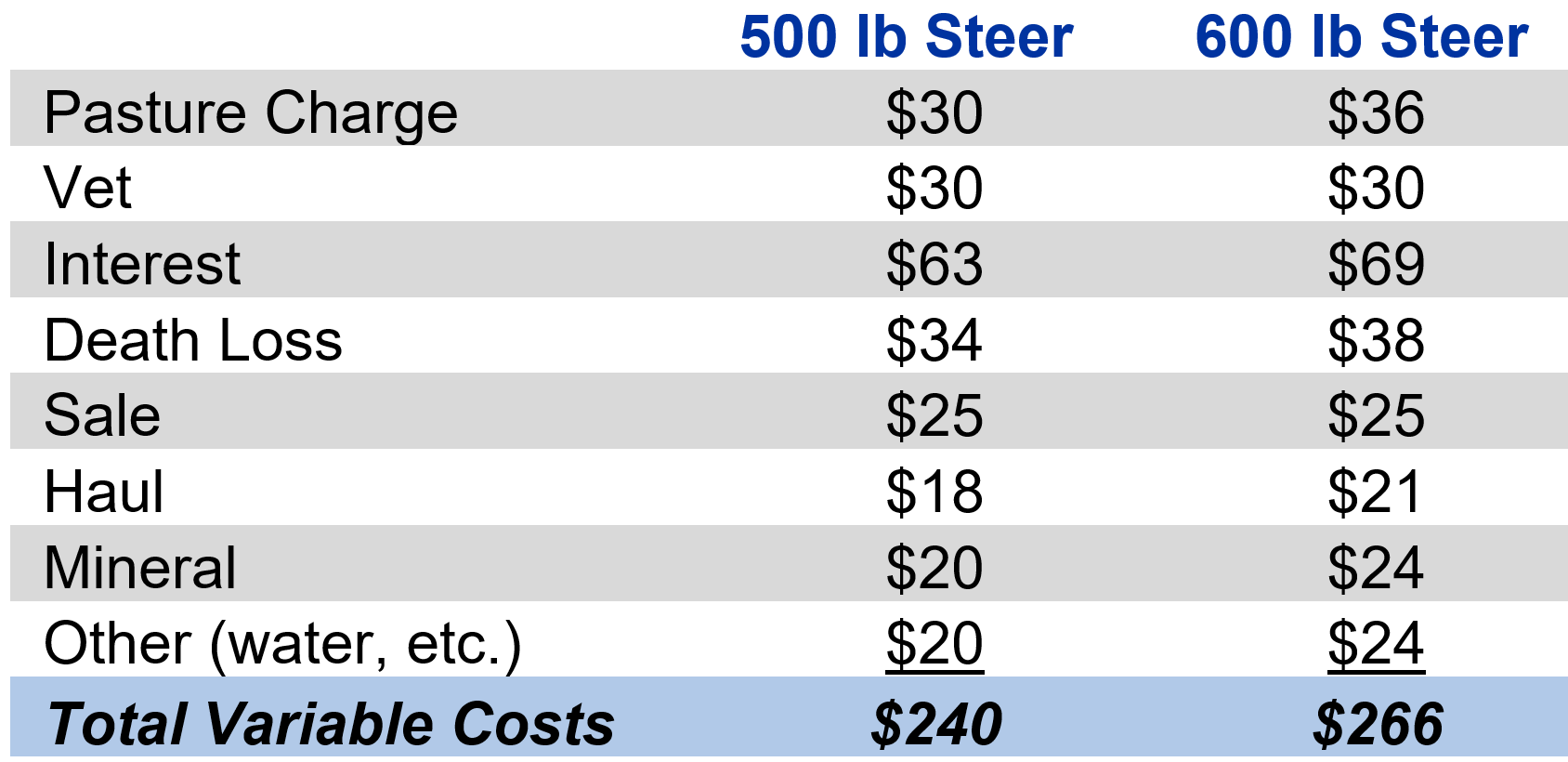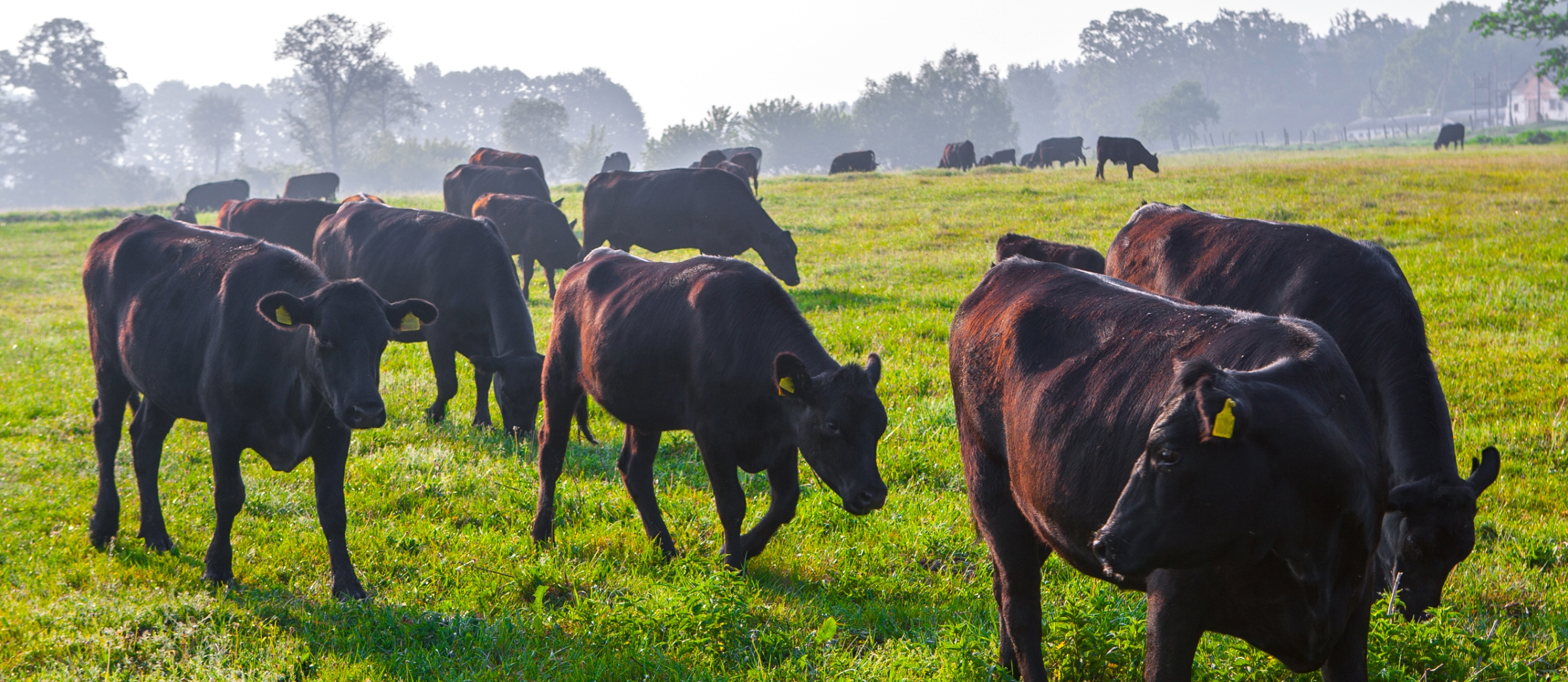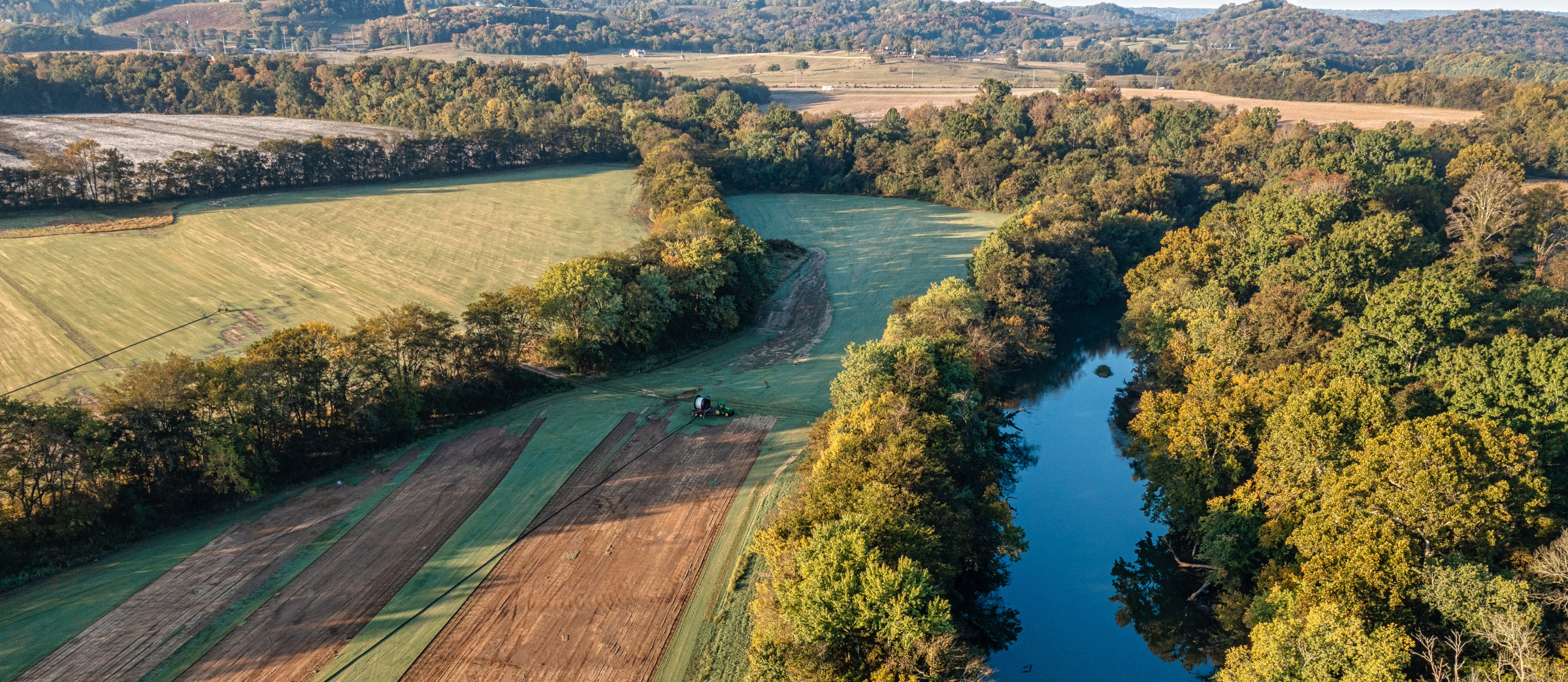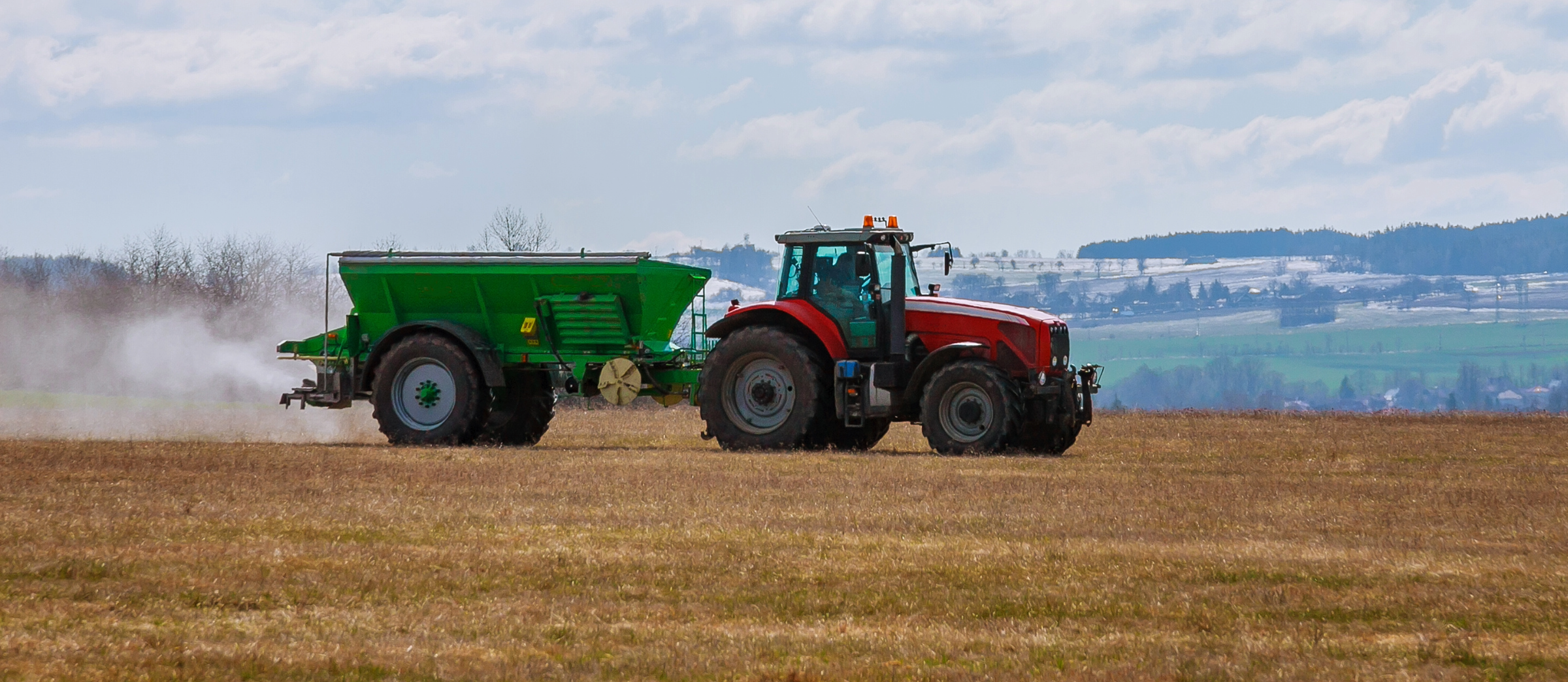Stocker Outlook for 2024
Author(s): Greg Halich and Kenny Burdine
Published: March 28th, 2024
Shareable PDF
Temperatures are getting warmer, the grass is getting greener, and the calf market is starting to take off. These are tell-tale signs of spring in Kentucky, and we are experiencing all three. Calf prices in the Commonwealth have increased by more than $50 per cwt since early December. The highest historical monthly state average price for a medium/large frame #1-2 steer was reached in March of 2015 and we are on track to exceed that price level this year. There are signs pointing to an early spring, which likely means that some stocker operators have begun placing calves in order to get ahead of the spring price run. At the time of this writing (March 13, 2024), fall 2024 CME© feeder cattle futures were trading around $270 per cwt, which is more than a $15 premium over the April contract. This suggests that heavy feeder cattle prices should get higher as we move through the year and partially explains the strength in calf prices. But the strong calf market does create questions for stocker operators purchasing calves for sale this fall.
The purpose of this article is to assess the likely profitability of summer stocker programs for 2024 and establish target purchase prices for calves based on a range of return levels. While it is impossible to predict where feeder cattle markets will end up this fall, producers need to estimate this and not rely on the current price (March) for 750-850 lb feeder calves. The fall CME© feeder cattle futures price (adjusted for basis) is the best way to estimate likely feeder cattle prices for fall. Grazing costs including pasture costs, veterinary and health expenses, hauling, commission, etc. are estimated and subtracted from the expected value of the fall feeders. Once this has been done, a better assessment can be made of what can be paid for stocker cattle this spring in order to build in an acceptable return to management, capital, and risk.
Key assumptions for the stocker analysis are as follows: 1) Graze steers April 1 to October 15 (197 days), 1.4 lb/day gain (no grain feeding), 2% death loss, and 7% interest on the calf. The interest rate used in this analysis may seem high for producers who are self-financed or have very low interest rates, but is likely pretty close for those going through traditional lenders. Given these assumptions, sale weights would be 775 lbs and 875 lbs for 500 lb and 600 lb purchased calves, respectively. Using a $270 CME© futures contract price for October 2024 to estimate sale price, a 775 lb steer is estimated to sell for $2.62/b and an 875 lb steer is estimated to sell for $2.54/lb. This estimate uses a -$10 per cwt basis for an 800 lb steer and a $8 per cwt price slide.
Estimated costs for carrying the 500 and 600 lb steers are shown in Table 1. Stocking rates of 1.0 acre per 500 lb steer and 1.2 acres per 600 lb steer were assumed in arriving at these charges. Most of these are self-explanatory except the pasture charge, which accounts for variable costs such as bush-hogging, fertilizer, seeding clovers, etc., and is considered a bare-bones scenario. Sale expenses (commission) are based on the assumption that cattle will be sold in larger groups and producers will pay the lower corresponding commission rate. However, producers who sell feeders in smaller groups will pay higher commission rates which could exceed $50 per head based on the revenue assumptions of this analysis. Any of these costs could be much higher in certain situations, so producers should adjust accordingly.
Table 1: Expected Variable Costs 2024

NOTE: Interest and death loss varies slightly by purchase price.
Target purchase prices were estimated for both sizes of steers and adjusted so that gross returns over variable costs ranged from $100-$200 per head. Normally we would use a range of $50-$150 per head, but we feel that the higher return range will be more representative this year. This gives a reasonable range of possible purchase prices for calves this spring. Results are shown in Table 2. For 500 lb steers, target purchase prices ranged from $3.19 to $3.38 per lb. For 600 lb steers, target purchase prices ranged from $2.93 to $3.09 per lb. For an estimated gross profit of $150 per head, target purchase prices were $3.28/lb for 500 lb steers and $3.01/lb for 600 lb steers.
As an example of exactly how this works for a 500 lb steer targeting a $150 gross profit:
775 lbs steer x $2.62 (expected sale price) $2031
Total Variable Costs - $240
Profit Target - $150
Target Purchase Cost $1641
Target Purchase Price = $1641 / 500 lbs = $3.28 / lb
Table 2: Target Purchase Prices For Various Gross Profits 2024

NOTE: Based on costs in Table 1 and sale prices of $2.62/lb and $2.54/lb for 775 lb and 875 lb sales weight respectively for 500 lb and 600 lb purchased steers.
For heifers, sale price for heavy feeders will be lower than comparably sized steers and they will not generally gain as well. In this analysis, we assumed the price discount for these heifers is $12 per hundredweight lower than the same weight steers and we assumed heifers would gain 10% slower than steers. With these assumptions, purchase prices would have to be $0.27/lb lower for 500 lb heifers and $0.24 lower for 600 lb heifers compared to the steer prices found in Table 2. Thus, when targeting a $150 per head gross profit, breakeven purchase prices were $3.01/lb for 500 lb heifers and $2.77/lb for 600 lb heifers.
Your cost structure may be different from that presented in Table 1, and if so, simply shift the targeted gross profit up or down to account for this. If your costs are $25 higher per calf, then you would shift each targeted profit down by one row: For example, you would use the $175 gross profit to estimate a $150 gross profit if your costs were $25 higher. Another way to evaluate this is that a $1 increase in costs would decrease the targeted purchase price by $0.20 per cwt for 500 lb steers and $0.17 per cwt for 600 lb steers.
It is important to note that the gross profits in Table 2 do not account for labor or investments in land, equipment, fencing, and other facilities (fixed costs). Thus, in the long run, these target profits need to be high enough to justify labor and investment, as well as a management return. Typically, by the time this article is written in mid-March, calf prices are approaching levels that would place returns on the upper end of the profit range analyzed. While there is a lot of variation in the price of calves across Kentucky right now, a lot of calves are selling well below many of the target purchase prices estimated in this analysis. This is all the more reason that stocker operators should carefully think through their budgets and make rational purchasing decisions.
In all likelihood, stocker operators will spend more money on calves this spring than they ever have. This means there will be a great deal of capital at risk from day one and there is always uncertainty about fall sale price. 2023 served as a perfect risk illustration as the feeder cattle market dropped sharply from mid-September until mid-December. The impact on the value of heavy feeders was drastic. That does not mean the same will happen in 2024, but it does speak to the importance of risk management strategies to protect potential returns. Forward contracts, futures and options have long been utilized for price risk management and remain viable strategies today. Livestock Risk Protection (LRP) insurance has greatly increased in popularity over the last few years and continues to be a viable strategy. LRP works similar to a subsidized put option in that it provides downside price protection (for a premium), but also allows the producer to capitalize on rising prices. But the beauty of LRP lies in its scalability, as it can be purchased in almost any quantity. Regardless of what risk management strategy is utilized, time spent considering price risk management is likely time well spent in these volatile markets. The best way to ensure profitability is to budget carefully and to manage downside price risk.
Greg Halich is an Associate Extension Professor in Farm Management Economics for both grain and cattle production and can be reached at Greg.Halich@uky.edu or 859-257-8841. Kenny Burdine is an Extension Professor in Livestock Marketing and Management and can be reached at kburdine@uky.edu or 859-257-7273.
Recommended Citation Format:
Halich, G. and K. Burdine. "Stocker Outlook for 2024." Economic and Policy Update (24):3, Department of Agricultural Economics, University of Kentucky, March 28, 2024.
Author(s) Contact Information:
Greg Halich | Associate Extension Professor | greg.halich@uky.edu
Kenny Burdine | Extension Professor | kburdine@uky.edu
Recent Extension Articles
The Ag Census Confirms Geographic and Commodity Shifts in the Kentucky Farm Economy
Will Snell
The twenty-year time frame between the latest USDA Ag Census (2022) released earlier this year and the 2002 Ag Census occurred during a period of dramatic changes in Kentucky agriculture. Overall, the Census data reveal that the market value of agricultural products sold in Kentucky increased from $3.1 billion in 2002 to $8.0 billion in 2022. However, the increase was not spread uniformly across the state. The two most western Kentucky Agricultural Statistical Districts (Purchase and Midwestern) experienced increases surpassing 200%, while the Eastern and Northern Kentucky districts realized minimal gains (53% and 27% respectively).
Maximizing Value: 2024 Spring Application of Broiler Litter for Grain Crop Production
Jordan Shockley
Spring is here and grain producers across the state are gearing up for planting. One of the many decisions producers have to make before planting is in regard to their nutrient management plan. Broiler litter provides a great opportunity as a complete fertilizer and is being produced and used throughout the state in grain production. However, the value of broiler litter can vary greatly depending on the management practices, nutrient content of the litter, soil test data and commercial fertilizer prices.




